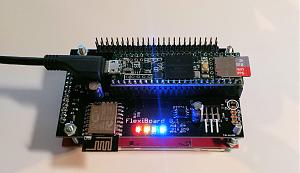A question,
on my "FlexiBoard", i have a ESP8266. It is powered by the Teensy.
Now, when it the ESP8266 is sending or receiving, i can hear sounds like buzzing (sounds like a cellphone) from the attached I2S-DAC (PT8211)
Near to the ESP is 100uF + 100nF, the PT8211 is decoupled with 47uF+100nF in series with 10 OHM to 3V3 (GND is analog-ground from Teensy) .
The buzzing is not loud, and i can hear it only when the PT8211 outputs silence /almost silience.
But, what i can i do to reduce it more ?
Would it help to use a extra voltage-regulator for the ESP ?
on my "FlexiBoard", i have a ESP8266. It is powered by the Teensy.
Now, when it the ESP8266 is sending or receiving, i can hear sounds like buzzing (sounds like a cellphone) from the attached I2S-DAC (PT8211)
Near to the ESP is 100uF + 100nF, the PT8211 is decoupled with 47uF+100nF in series with 10 OHM to 3V3 (GND is analog-ground from Teensy) .
The buzzing is not loud, and i can hear it only when the PT8211 outputs silence /almost silience.
But, what i can i do to reduce it more ?
Would it help to use a extra voltage-regulator for the ESP ?
Last edited:


